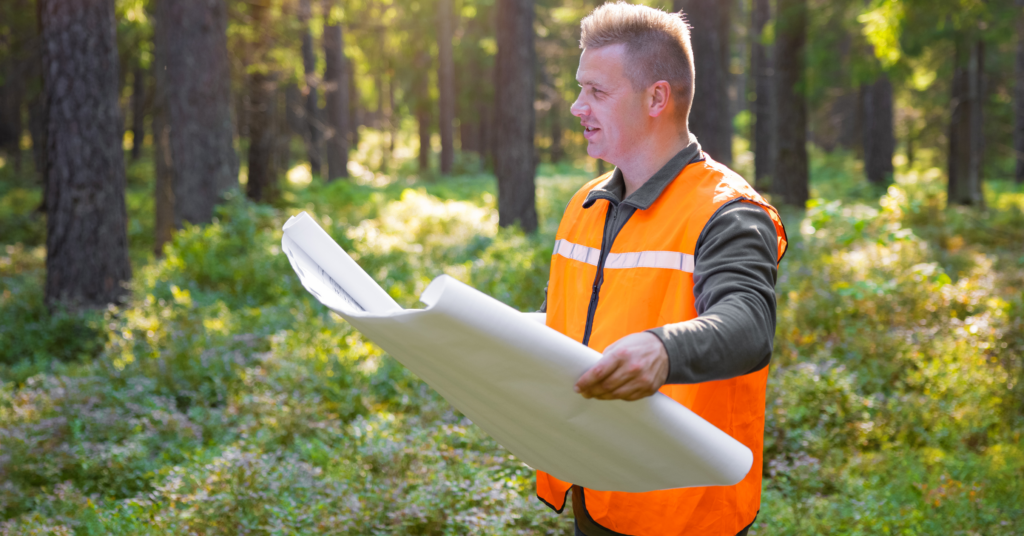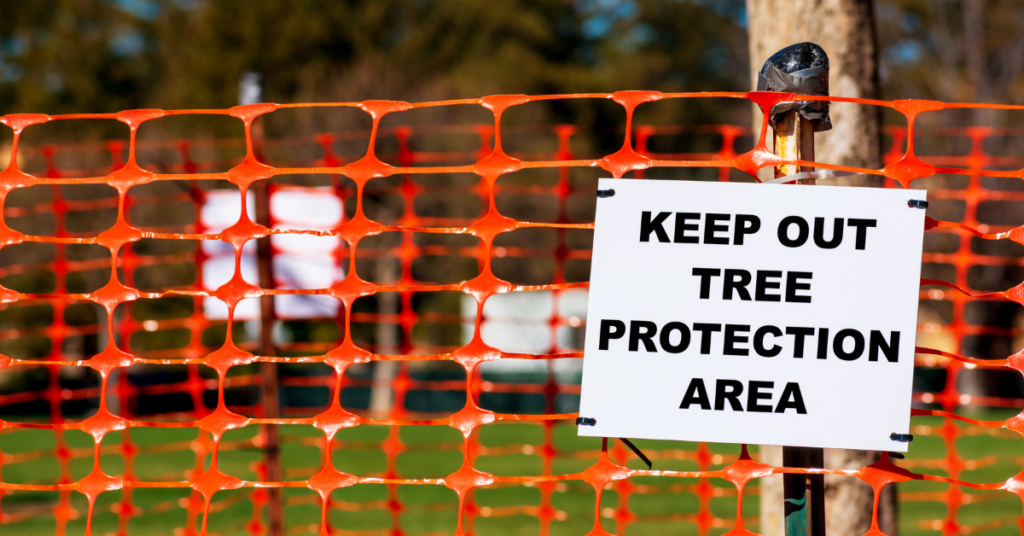If you’re planning a home improvement or construction project in Victoria, BC, there are important steps to take to preserve the trees currently on your property. Trees are a valuable asset, adding both aesthetic appeal and providing numerous environmental benefits. Mature trees have also been shown to actually increase desirability of a property and increase property value! But did you know that without the proper precautions, construction can significantly harm the trees around a project? Understanding the potential risks to trees during construction and learning how to mitigate them is crucial. This comprehensive guide will empower you with the knowledge and best practices needed to protect your trees during construction. In the lush and diverse landscapes of Victoria, BC, protecting the natural beauty and integrity of our trees during construction is not just a practice but a commitment to preserving our city’s green heritage.
Understanding the Impact of Construction on Trees
Construction activities can damage trees in several ways. The most significant of which are soil compaction, changes in grade near trees, and the severing of roots, which can all negatively affect a tree’s health. Furthermore, construction equipment and materials can physically damage the bark and branches. Without adequate protection, trees may become stressed, leading to a decline in health or even death over time.
Conduct a Tree Inventory and Assessment

Before starting any construction, it’s crucial to know which trees are present on the property and assess their health, species, and size. Typically an Arborist Report will be required which can only be completed by an ISA Certified Arborist who holds their TRAQ (Tree Risk Assessment Qualification). Consider hiring a Certified Arborist at Anchor Tree Service to help you with this step, to conduct a tree inventory and health assessment which can provide valuable insights. The role of a certified arborist is invaluable in assessing, planning, and supervising the protection of trees on your property. Understanding why you should hire an ISA Certified Arborist can help you appreciate the expertise they bring to your construction project. We can help you develop a tree protection plan, and devise a replacement tree plan in any instance where removal of a protected tree is required for the project. A certified arborist can also identify which trees should be retained for the project and advise on how to protect them, considering their specific needs and vulnerabilities.
Establish Tree Protection Fencing
One of the most effective ways to protect trees during construction is by establishing physical barriers around them. These barriers should be erected around the entire circumference of the tree where possible to protect the Critical Root Zone (CRZ), and create a “tree protection zone.” Every CRZ is different, and depends on the trees species and age, however a good estimate is to place the barrier near the dripline of the tree (the outermost circumference of a tree canopy where water drips onto the ground). Alternatively, multiplying the DBH (Diameter of the tree, measured at Breast Height) by x12 will also give you a good indication of where to place the tree protection fencing.
Fencing the area around trees can prevent physical damage from vehicles, equipment, and foot traffic. It also can help mitigate soil compaction issues, and ensure that no building materials are stored over the CRZ. When establishing physical barriers around trees, it’s important to comply with Victoria’s local guidelines for tree protection during construction. The City of Victoria provides specific regulations to ensure the protection of trees within construction sites (Tree Protection Bylaw No. 21-035), emphasizing the critical importance of safeguarding our urban forest. It’s also essential to ensure that no materials, chemicals, or temporary structures are stored within these protected zones. When planning construction projects, it’s essential to be aware of local environmental laws and which trees are considered valuable community assets. What trees are protected in Victoria for property developers? provides crucial information for compliance and planning.
Minimize Soil Compaction
Soil compaction reduces the pore space between soil particles, which can severely limit a tree’s ability to absorb water and nutrients. This is crucial to understand, as the negative effects of soil compaction may not be visible for months to years after a project has taken place, at which point the damage has been done. To minimize soil compaction, it’s important to limit the movement of heavy machinery within a tree’s CRZ. Adding a temporary thick layer (20cm deep) of mulch within the protective barriers and over any areas where tree roots are suspected can also help reduce compaction and maintain soil moisture.
Avoid Changes to Soil Grade
Adding or removing soil within the critical root zone can suffocate tree roots or expose them to the elements, leading to stress and potential decline. It’s crucial to maintain the original soil grade. If changes to the grade are necessary, consult with a certified arborist on how to do this without harming the tree. This may take the form of a tree island, or tree well to help maintain the original grade of the tree’s critical root zone.
Careful Planning and Execution of Utility Lines
Installation of utilities like water, gas, and electricity often requires trenching that can sever tree roots. Plan utility lines to avoid major roots and use tunneling methods under roots when possible. It’s also beneficial to consult with a certified arborist during this planning phase. The use of HydroVac or an AirSpade may be advisable at this stage, or anytime excavation near significant roots is suspected.
Pruning

Pruning may be necessary to remove branches that could be damaged by construction activities or to provide clearance for machinery and materials. Given the variety of native and ornamental trees in Victoria, from Garry oaks to Douglas-firs, pruning should consider the species-specific requirements to avoid unnecessary stress to the trees. However, pruning should be done judiciously and preferably under the guidance of a professional arborist. While discussing the necessity of pruning for clearance or tree health during construction, it’s beneficial to understand the nuances involved. What is the difference between tree trimming and pruning? explains the specific purposes and techniques for each method.
Arborist Supervision
Arborist supervision is an important part of any tree protection plan and is also required by Victoria’s Tree Protection bylaws. Having a certified Arborist directly supervise any work within the CRZ – especially any excavation, can play a significant role in ensuring that the retained trees are adequately protected during the time that the trees’ health is at its most vulnerable. Conducting work within the CRZ of a tree without the supervision of an arborist can negatively impact the health of the tree and can also make the contractor liable for fines imposed if the trees are damaged.
Post-Construction Care
After construction is completed, a period of intensive care might be necessary to help trees recover. This care may include a supplementary watering program, mulching, and careful monitoring for signs of stress or disease. After construction, trees in Victoria, especially those native to the Pacific Northwest, may require specific care protocols to ensure their recovery and sustained health. Consulting with a local arborist for a tailored post-construction care plan is crucial. After construction, trees might show signs of stress or decline; it’s critical to recognize when these signs might indicate a more serious problem. 6 signs it might be time to remove your tree can help you make an informed decision. A follow-up assessment by an arborist can identify any issues that need to be addressed promptly.
Educate Your Construction Team
It’s vital to communicate the importance of tree protection to your construction team. Make sure everyone understands the protective measures in place and the reasons behind them. A project arborist can help to regularly monitor compliance throughout the construction process to ensure all protection measures are maintained. To ensure the longevity of your trees during and after construction, understanding how to mitigate risks is key. Preventing storm damage to your trees can offer additional strategies to protect your green assets from natural elements.
Conclusion

In Victoria, BC, where the beauty of our natural landscape intertwines with our community, ensuring the health and safety of your trees during construction projects is not just a precaution; it’s a necessity. At Anchor Tree Service, we understand the delicate balance between development and nature preservation. Our team of Victoria, BC Arborists is equipped with the knowledge, skills, and passion to guide you through every step of your construction project, ensuring your trees are protected, healthy, and thriving. Whether you need an arborist report, tree risk assessment, pruning, or post-construction care, we’re here to provide expert services tailored to your specific needs. Don’t let construction compromise the green legacy of your property. Contact us today to safeguard your trees and enhance the value and beauty of your Victoria home. Let’s work together to protect our green heritage for future generations.


